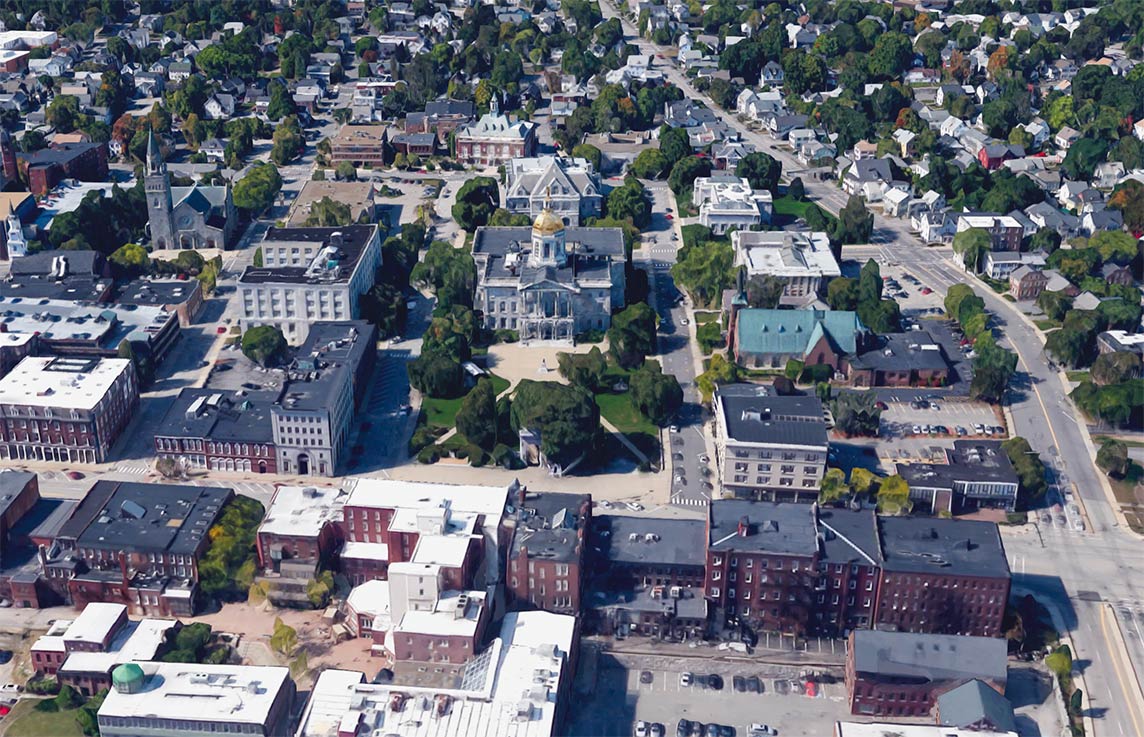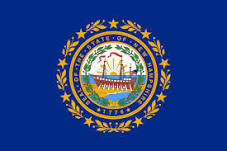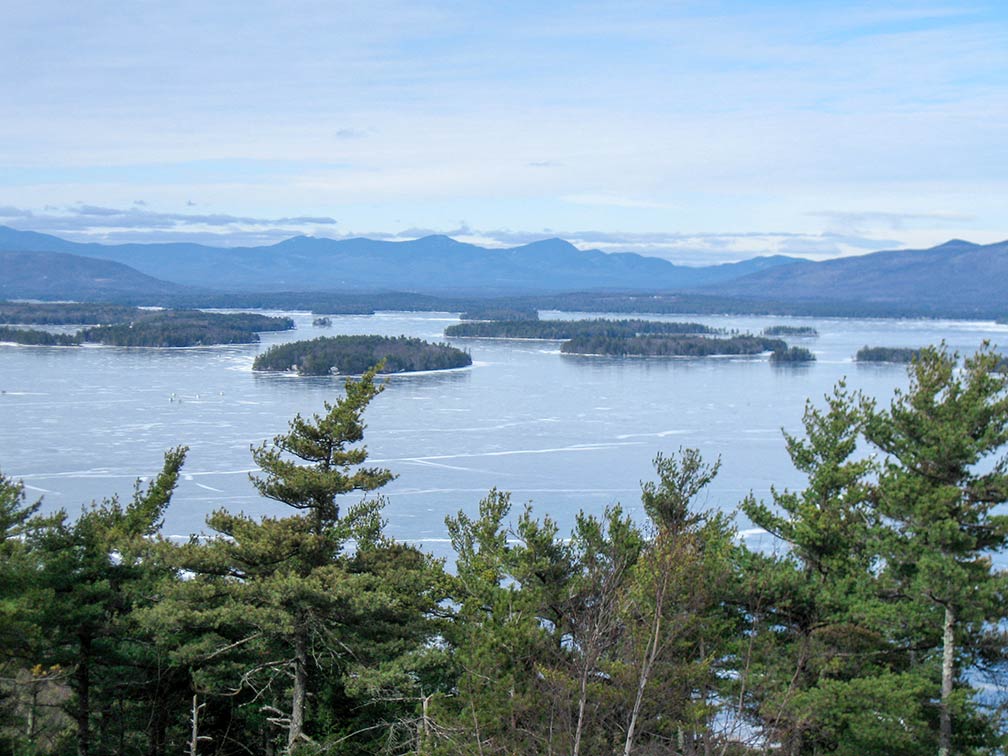Population
 New Hampshire's cute little State House (in center) is located in Concord, the state's capital. The Greek Revival style capitol houses New Hampshire's General Court, the Governor, and the Executive Council.
New Hampshire's cute little State House (in center) is located in Concord, the state's capital. The Greek Revival style capitol houses New Hampshire's General Court, the Governor, and the Executive Council.
Image: Google
New Hampshire has a
population of 1.35 million people (est. 2019),
[3] ranked 41st. Capital is
Concord; the largest city is Manchester (NH), the largest metropolitan area is Greater Manchester, with a population of 400,000 people.
Race and Ethnic groups
The population of New Hampshire is almost pure white (90% White Americans). The rest of the population is made up of 4% Hispanics or Latinos, 3.0% Asians, 1.8% Black or African Americans, and 0.3% Native Americans.
[7]
By far the largest
airport in the state is
Manchester-Boston Regional Airport (
IATA code: MHT) in the south of Manchester NH.
Cities and Towns in New Hampshire
The map shows the location of following cities and towns in New Hampshire:
Largest cities in New Hampshire with a population of more than 90,000:
Manchester (110,000), Nashua (68,000),
Concord (42,000), Derry (33,000), Dover (30,000), Rochester (30,000)
Population figures in 2014
Other cities and towns in New Hampshire:
Berlin, Claremont, Conway, Exeter, Franklin, Hanover, Keene, Laconia, Lancaster, Lebanon, Littleton, Milford, Plymouth, Portsmouth, and Woodsville.





